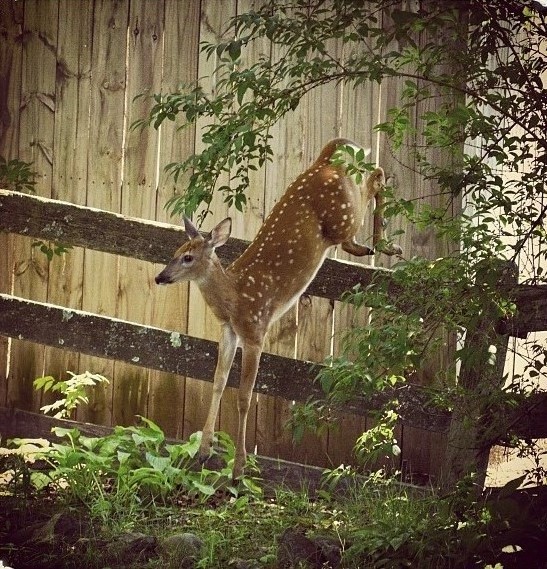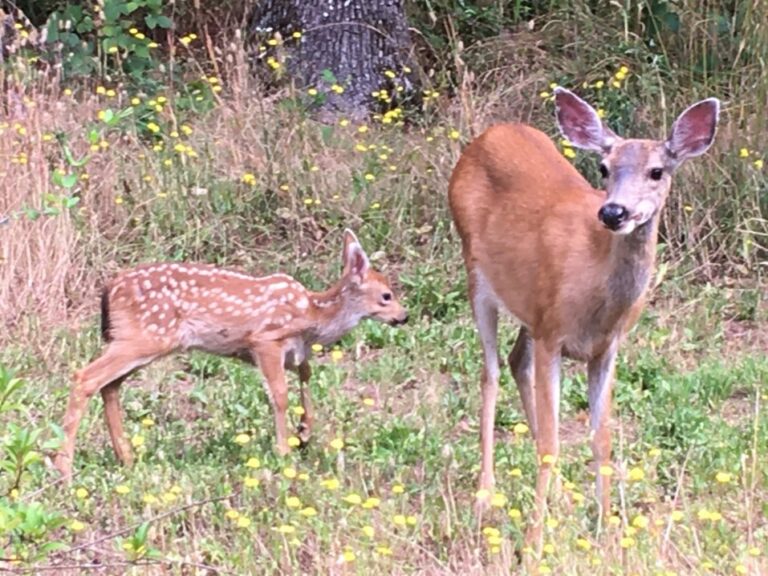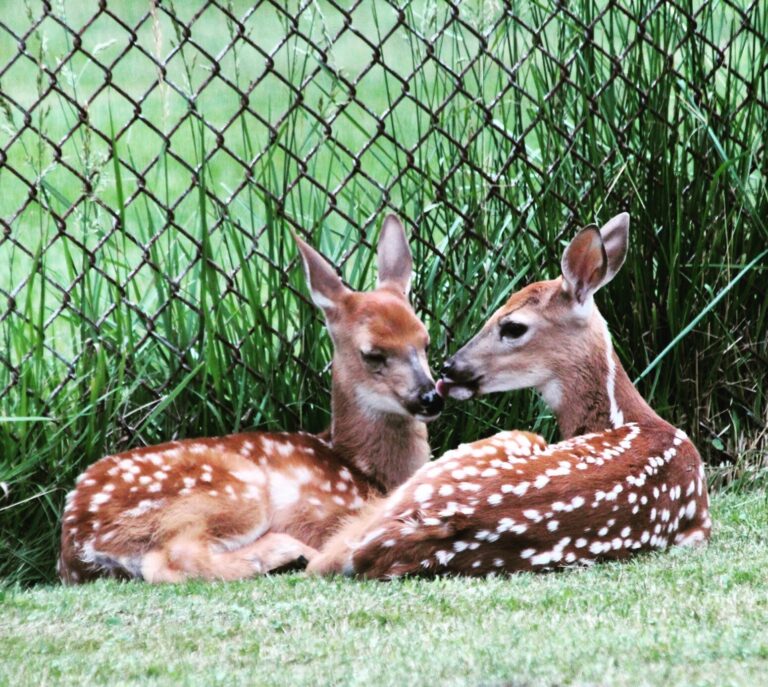
April 21, 2021
Can a Baby Deer Jump a Fence On Your Property?
The movements of a baby deer can differ from that of an adult deer. This is due to the small body size of the baby deer and also because it may be still learning from its mom how to successfully overcome physical barriers such as fences.
Deer have no choice but to jump over fences, and most of the time, they are successful at this when they have some practice.
Can Fawns Jump Fences?
A baby deer, also referred to as fawn, has little experience with jumping over fences compared to its mom who has a much higher success at crossing barriers. Instead, fawns often pass under the fence due to their smaller size and lack of experience in jumping.
Deer are likely to jump fences mostly during summer when they go to forage more. At this time, the doe, which is an adult female deer, is teaching its offspring how to jump and successfully cross barriers. However, it will be quite some time before the fawn can jump over the fence properly.

At What Age Can a Fawn Jump a Fence and How High Can It Jump?
As the fawn is so small, it certainly cannot jump over a fence that is 6 or even 4 feet high. This is until the deer is at least 2 months old when it is able to jump a 3.5 or 4 feet fence (42-48 inches high).
So if the fence in your yard is no higher than 4 feet, a little deer will jump out with mom when it’s 2 months old. It will not be able to do so at an earlier age.
If there is a space under the fence of at least 1.3 feet (16 inches) from the ground, it will allow the fawn to cross underneath. It can be heartbreaking to watch the baby run up and down a fence that its mom has already jumped over.
Do Deer Jump Over Fences?
Adult deer can jump over common yard fences. They’re more likely to clear a barrier if they are able to sense how high it is. Under normal conditions, they will not attempt a fence that’s 6 feet tall. However, if they’re being chased or threatened, deer have the ability to jump even an 8-foot fence on level ground.
The best solution to keep these animals away from your yard is to install a deer-proof fence. It’s important to check the height of your fence to make sure the deer is not able to jump over it and get onto your property. Higher fences act as a great physical barrier to this wildlife because they prevent the deer from jumping over and force them to go somewhere else.
Thus, the fence should be a minimum of 7 feet in height for a typical size yard. But for a very small garden area, like a 2×2 feet (25×25 inches), a 6-foot high fence should be sufficient in some locations with light deer activity.

What To Do With a Fawn In Your Yard?
Knowing that a baby deer can’t jump barriers, you may be wondering how a fawn ends up inside your fenced yard. During springtime, the mom jumps over the fence while she is still pregnant and delivers one or two babies inside the yard. After the first 24 hours of their birth, the doe jumps out and leaves them alone in your yard while she goes off to find some food.
Since a newborn fawn is too weak to keep up with its mom for the first few weeks of life, it will lie down motionless and nap nearly all the time hidden in deep grass where it cannot be found by predators.
Many people who spot a tiny fawn lying in the grass, make this critical mistake and try to care for it, thinking that it has been abandoned by its mom. But the doe follows her routine and will come back to feed and care for her baby at the end of the day. Unfortunately, despite your good intentions to help, it can be deadly for the fawn.
If the baby deer is a bit older, wait until you notice it is trying to get out. In this case, open the gate and let it out so that it can have the freedom to go wherever it wants.
In certain circumstances, if you see a lone fawn and a dead doe in the vicinity, or if the fawn has been in the same place for more than a day with no sign of his mom, or it’s walking around crying or visibly injured, call wildlife control company in your area for the best course of action before you interfere.
If they determine the fawn is really abandoned, they will know just how to deal with this situation. Contact Westchester Wildlife for humane, live and dead deer removal services in Westchester, Putnam, or Dutchess County, NY, as well as in Fairfield and Litchfield County, CT.
